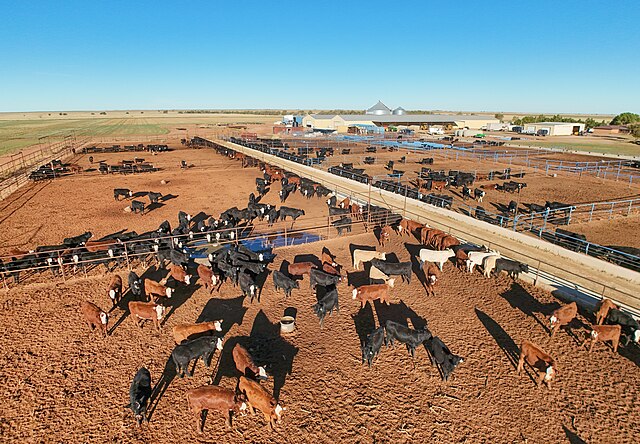The U.S. has again halted live animal imports across the southern border after inspectors detected New World Screwworm (NWS) in Mexico.
These restrictions follow sightings of screwworm larvae on a farm deep in Mexico, 700 miles off the United States’ border.
Pouncing upon the detection, the U.S. Department of Agriculture (USDA) immediately stopped border-crossings of bison, cattle and ponies.
The USDA however says it will allow normal routine checks for pending orders but will mount veterinary examinations.
Defending its decision, the agency cited the spread of screwworm in Central American nations such as Panama and Guatemala since 2023.
Mexico’s last scourge came up in November 2024, which led to the closure of livestock trade with the U.S. till February 2025.
Upon the reopening of the border, American beef prices came down to earth after having remained elevated through early 2025.
Screwworm is the larva of C. hominivorax fly, and it breeds on open tissue of cattle and other wildlife, including birds.
“Unfair”
The pest’s impact on trade has made Mexico’s President Claudia Sheinbaum call the stop “unfair,” as of May 12, 2025.
Sheinbaum especially fears that the stoppage of beef cattle importation for a 15-day window could be bad economically.
The resistance is understandable as the new president has in the past weeks been shuffling diplomacy to offset U.S.’ tariffs.
Regarding screwworm, she told a press briefing that her government has been beefing up containment efforts since receiving the alert.
On her part, the U.S.’ Secretary of Agriculture Brooke Rollins vowed to avert a repeat of a past screwworm plague whose recovery took 30 years.
So, where does this leave live animal and beef cattle imports from Mexico-with the U.S. being the exclusive market? The statistics below review answers to the question.
Statistics on Live Animal Imports by the U.S. From Mexico
Cattle and bison, as well as dairy and beef products, constitute American livestock imports from Mexico. An eighth of Mexico’s cattle herd of 8.7 million head (2024 estimate) end up as live exports, almost all into the United States. In 2024, estimates put live cattle imports from Mexico at 1.2 million head, up 9% from 2023. 80% of the bilateral cattle imports are crossings via the states of Arizona and New Mexico.
How many bisons remain today?
Bison, essentially long distance buffalos, also count in livestock trade between private ranches. Mexico, the United States and Canada together hold a bison population of 500,000 head. This is a far cry from the 19th century levels of at least 30 million head. However, the current count is commendable as a product of recent conservation efforts.
How many feeder cattle does the U.S. import weekly from Mexico?
American importers order between 25,612 and 27,760 feeder cattle from Mexico weekly, per the U.S. Department of Agriculture (USDA)’s March 2023 resource. In the long run, this amounts to a yearly total of 200,862 head (2022) or 262,625 (2023).
How much do cattle from Mexico to the U.S. cost?
According to the USDA’s March 2023 sample report, sales happen by weight class. While 300 to 400-pound cattle sold at between $187 and 198, 500 to 600-pound equivalents sold at $167 to 178.
